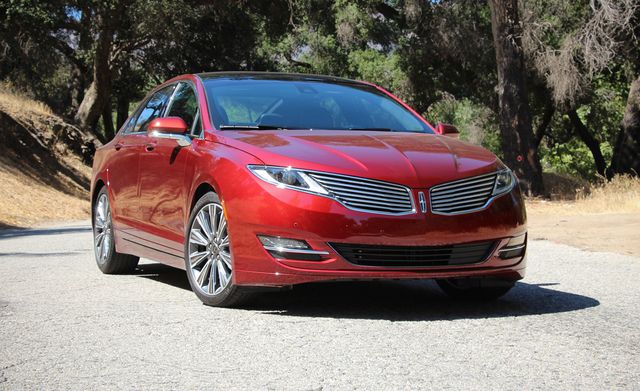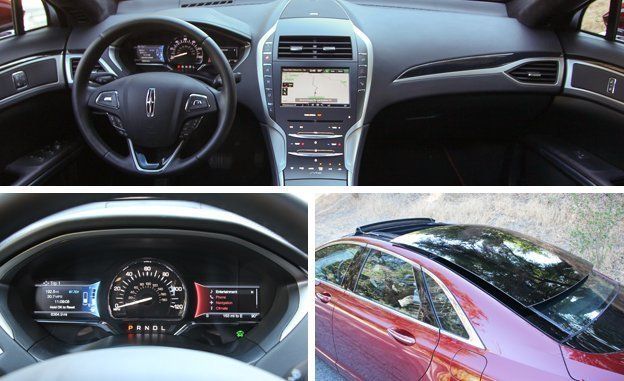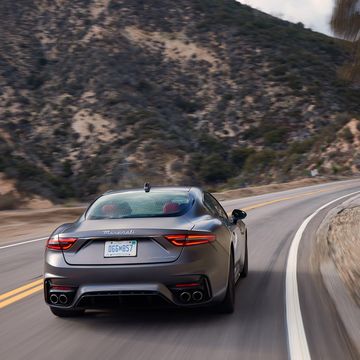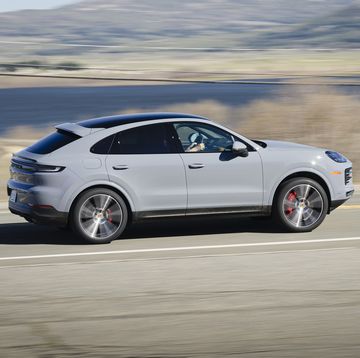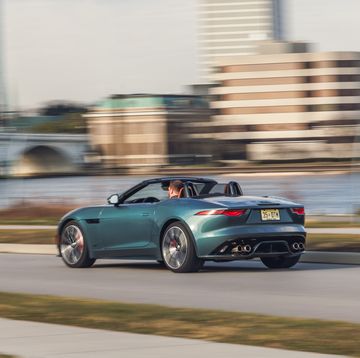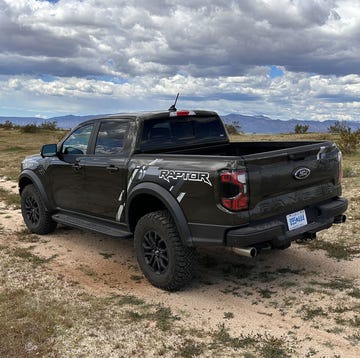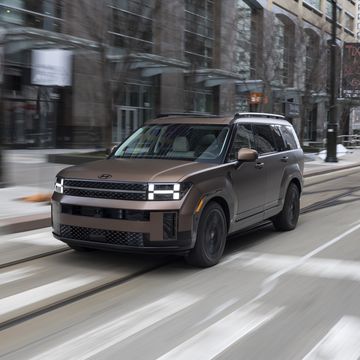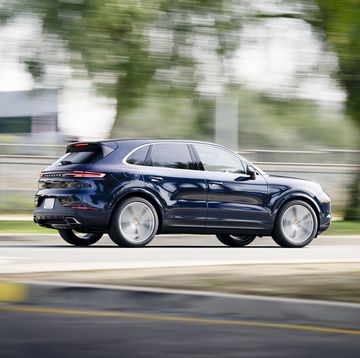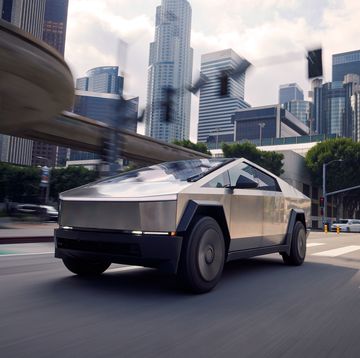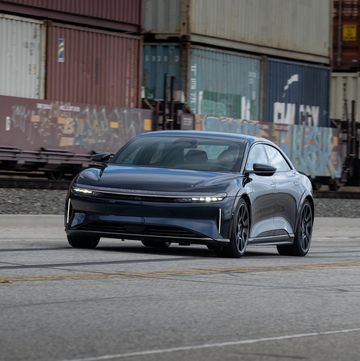Overview:
2015 Lincoln MKZ Hybrid Black Label, base price: $46,500. Technology package: $2495. Multi-contour seats: $595. Full-length sliding glass roof: $2995. THX sound system: $995. Chroma Flame metallic red paint: $1750. Grand total: $55,330.
Yep, 55 grand.
Why lead this review with a price breakdown? Because it underscores the point we’ve made about the MKZ all along, which is that it doesn’t offer a whole lot more than the Ford Fusion with which it shared its mechanicals—all but one of the powertrains and even the infotainment setups are identical—yet it is far more expensive. Indeed, this particular MKZ is nearly as expensive as possible, which makes its shortcomings stand out even more.
Particularly egregious is something endemic to all MKZ hybrids, regardless of price: the sound of the Atkinson-cycle 2.0-liter four-cylinder/CVT combo, which drones miserably under acceleration. Fortunately this isn’t all the time, and we took great pains to drive gingerly and succeeded in keeping the hybrid in its near-silent, full-electric mode for 41.4 percent of the miles we spent in it, according to the car’s calculator. Still, we averaged a ho-hum-for-a-hybrid 31 mpg, nowhere near the EPA’s 40-mpg combined rating, which was itself revised downward from the overly optimistic 45 mpg stated when the car was introduced for 2013.
As a luxury car, the Black Label model we tested is a mixed bag. Like all MKZs, this test car is very pretty—perhaps its strongest selling point versus the cheaper Fusion—and has a ride that’s creamier than a bowl of warm pudding. The Black Label’s material upgrades, which include a black microsuede headliner, leather-topped dash and door panels, and black-stained wood, are worthy of a Mercedes-Benz. But in our car those niceties contrasted starkly with ill-fitting dash-to-door junctions, a warped rubber liner in the lower center console, and grainy hard plastics behind the headrests and in the cup holders.
At the end of the day, it’s going to take more than Venetian leather and the numerous spiffs of Black Label ownership (see below) to make the MKZ better. A refreshed MKZ is expected next year as a 2017 model, and it will adopt Continental-esque styling cues, although that will address the aspect of the MKZ that needs the least help. Here’s hoping Lincoln puts just as much work into the interior and powertrain.
BUILD YOUR OWN | RANK IN SEGMENT
What’s New: The new-for-2015 Black Label trim levels for the MKZ and MKC are part of Lincoln’s effort to distance its products from the Fords on which they’re based, as well as to provide a more special ownership experience than non–Black Label models. Buyers of the high-zoot Lincolns get services—administered through certified Black Label dealers—such as single-point concierge service, free car washes for the entire length of ownership, vehicle pickup/delivery for maintenance, free loaner cars during service, and more. The MKZ Black Label interiors come in four flavors—ranging from warm brown tones to the more avant-garde black-and-tomato “Center Stage” theme on our test vehicle—and include the aforementioned headliner, as well as perforated microsuede and Venetian leather upholstery, real wood, and coordinated floor mats. All this comes at a cost of $10,415 more than the base MKZ.
What We Like: The MKZ’s styling has always been its strongest selling point, and while the Black Label treatment brings few exterior tweaks to distinguish those cars from workaday MKZs, the car looks fresh and modern. The massive sliding roof is quite cool, especially when sitting in the rear seat. The ride quality is Lincoln-worthy, and the interior is library-quiet when the car is running in EV mode. Speaking of sound, the optional THX audio system is splendid. The chance to experience the Black Label fixin’s was the primary reason we reviewed this car again, and indeed they’re very, very nice.
What We Don’t Like: With just 188 total system horsepower and nearly two tons to move, the MKZ hybrid is definitely not a sports sedan, and the unrefined engine sound isn’t fit for a $55K automobile. Even by hybrid standards, acceleration is sluggish and gets even slower when the battery isn’t fully charged, as we noted in our previous test of a 2013 MKZ hybrid. The steering and brakes feel unsurprisingly artificial. The push-button transmission gear selector and audio-volume/fan-speed slider controls look clean in terms of design but create challenging—and sometimes irritating—ergonomic experiences. Finally, the nifty roof blocks much of the view out of the rear window when retracted, and we’re told that its weight may account in part for our disappointing fuel economy.
Verdict: Even the Black Label experience isn’t enough to make the MKZ competitive in its entry-luxury segment.
Specifications

